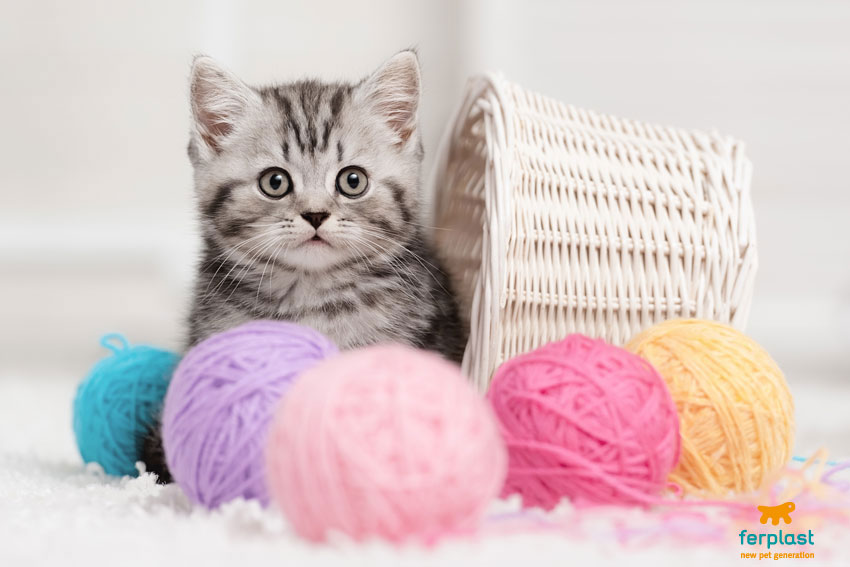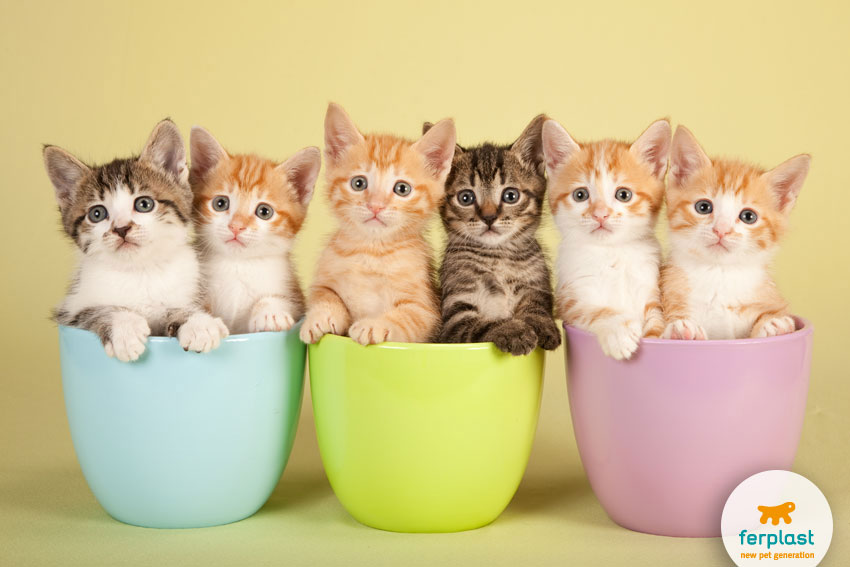How wonderful! There’s a new kitten at home, a furry ball to cuddle with! But all kittens have their own needs. And how does one take care of a kitten? Let’s see what we need to know and what you’ll need to use to welcome your kitten without any hassle.
The kitten has just gotten home and you can’t wait to hold her in your arms and cuddle with her. Perfectly understandable! However, our role is to ease the newcomer’s adaptation into the new environment, so we must allow the new member of the family to explore her surroundings in her own rhythm. New smells, different places, strange noises… It’s normal to be suspicious of us, hiding or behaving in a very cautious manner.
What to do, then? We must be patient and control our wish to cuddle, and never force your kitten to do something she doesn’t want to do (for instance, stay in your lap or come out of her hiding places). To keep her from feeling too vulnerable, it’s better to wait until she’s comfortable enough around you and her new home. To help encourage her, you may offer her food or a toy.
It’s very important to make sure your kitten has a place all of her own right from the beginning, where she can hide, sleep and chill (cats, and kittens in particular, spend a large part of their days sleeping). For this reason, place the kitten’s cushion or house in a separate area that is not too noisy and is away from heavily trafficked parts of the house. Remember that cats love to hide in the most unexpected objects, such as purses and bags, and therefore love closed houses that make them feel protected.
Never forget the bowls, made of plastic, metal or ceramic, depending on your taste and need. Three is definitely the perfect number: one for dry food, one for canned food, and another for water. The eating area must be located in a calm place within your home, as cats don’t like being disturbed while eating.
Similarly, her litterbox must be placed in a place that is not particularly trafficked, away from her food bowls and from curious eyes. No one loves renouncing their privacy, cats included. Remember to keep the litterbox as clean as possible by removing the soiled sand whenever you see it and chancing it when exceedingly used. If you don’t do it, your can may not appreciate the strong odour and pick a better-smelling place for a bathroom…
The litterbox deserves its own paragraph. Kittens usually start using the litterbox easily, all you need is to take her to her litterbox a couple of times during the day, whenever you seem a long time has passed since the last time she went. Of course, if your kitten soils your house, forget about rubbing her nose in her own pee, as that would be pointless. If you catch her on the act, it’s better to just say a dry “no” and take her to her litterbox immediately. If you come across her little “gifts” left around the house, clean them away and forget about them. Cats are naturally clean animals and yours will soon learn to go to the bathroom in the right place. Be patient!
Another important thing you should know is that cats use different methods to mark their territory, and one of these methods involves scraping… And yes, your home is now her territory. Assuming you have no wish to refurbish your chairs and sofas, maybe it’s a good idea to come up with a diversion. If you have a lot of room at home, it may be a good idea to buy a large cat scratching post, to make sure your cat learns to scratch only where she’s supposed to. These posts are equipped with comfortable cushions where they can rest, scratching areas and sometimes toys. But don’t fear, there are scratching posts in all sizes and prices.
Keep in mind that your kitten will learn to do everything you allow her to do, which means you should teach her quickly, but patiently (no yelling, please!), what NOT to do.
Now you’re ready to enjoy your lovely kitten, to cuddle her and to discover a thousand different ways to play with her. ![]()


